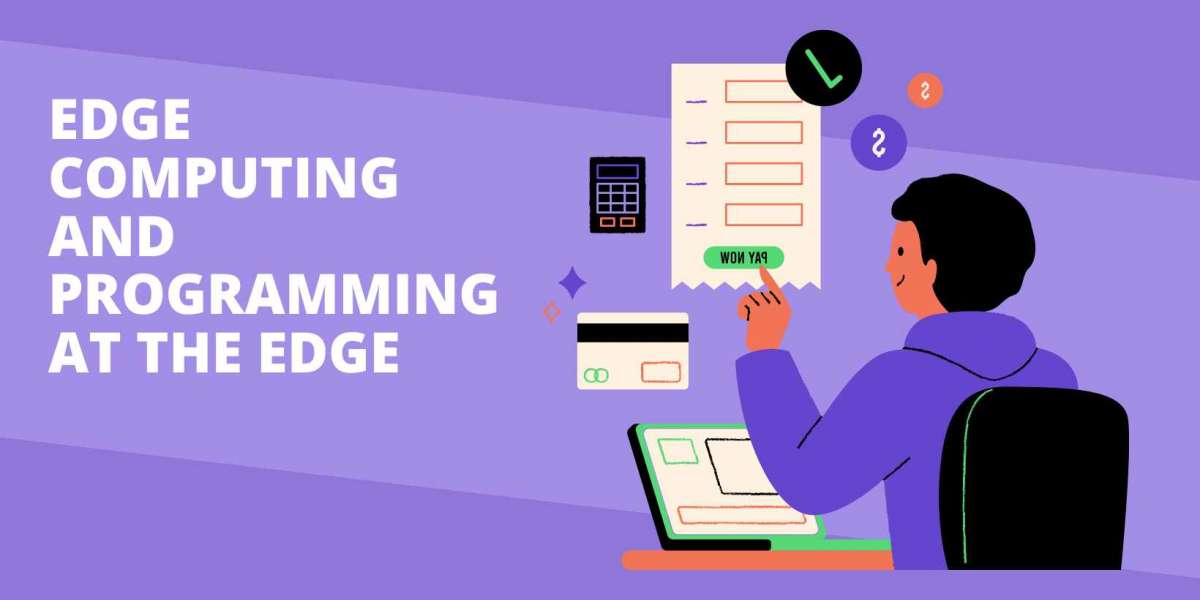In this article, we dive into edge programming to understand how code running on edge devices unlocks new capabilities.
Edge computing's emergence as a transformative technology has led developers to seek help with programming assignments tailored for this unique paradigm. Platforms like codebeach.com provide specialized resources, guiding developers in mastering the intricacies of programming at the edge. From optimizing code for resource-constrained environments to implementing real-time data processing, help with programming assignments in the realm of edge computing empowers developers to harness the potential of this decentralized and efficient computing approach.
The Emergence of Edge Computing
Traditional models involve collecting data centrally and running analytics in the cloud. However emerging IoT, AI, and 5G use cases demand real-time insights and responsiveness. Round-trip latency to the cloud can be prohibitive.
Enter edge computing - processing data locally on smart devices or on-premise servers near the source. Only relevant data is transmitted to the cloud - minimizing bandwidth usage while meeting real-time needs.
Key drivers of edge computing adoption:
- Latency reduction - faster response times
- Bandwidth optimization - reduced network usage
- Location-based processing - context for IoT devices
- Data security - localized processing increases control
- Network resilience - operate disconnected from the cloud
- Scalability - avoid bottlenecks of centralized systems
What is Edge Programming?
To leverage the edge computing paradigm, software has to be specifically engineered for distributed environments. Edge programming focuses on:
- Programming languages like C, Rust suitable for resource-constrained devices
- Microservice architectures to split functionality across nodes
- Asynchronous and reactive paradigms to handle distributed data
- Concurrency and parallelism to optimize performance
- Hardware-software codesign to maximize efficiency
Frameworks like Kubernetes extend container orchestration and service mesh concepts to the edge. Databases like Apache Cassandra provide distributed data storage across edge nodes.
Programming Challenges at the Edge
Edge ecosystems have unique constraints:
- Intermittent connectivity - can't rely on 24/7 cloud access
- Location dependency - have to account for device placement
- Decentralized control - no centralized orchestrator
- Heterogeneous hardware - diverse chipsets and architectures
- Constrained resources - limited bandwidth, compute, battery
- Security - increased vulnerabilities with decentralized nodes
This requires "edge-native" programming abstractions and patterns.
Unlocking Business Value Through Edge Programming
Edge programming unlocks game-changing applications:
- Real-time industrial automation
- Robotics and autonomous vehicles
- Augmented and virtual reality
- Content caching and delivery
- Smart homes, cities, and spaces
- Precision medicine
- Defense systems
- And many more...
These systems involve programming sensors, actuators, controllers, classifiers, and translators that work together to enable edge intelligence.
As organizations adopt edge computing strategies, edge programming skills are becoming highly sought after. It represents the future of distributed computing in a ubiquitous and embedded intelligence world.
The Future of Intelligent Edge Systems
As edge devices get more powerful, they will work symbiotically with cloud resources. Shared programming models will emerge, spanning the continuum from edge devices to core cloud.
Edge-native programming languages and toolchains will mature to simplify app development across heterogeneous environments. Vendors will offer integrated stacks that abstract away low-level complexity.
The edge is a new paradigm that necessitates innovating across computer science fields - from operating systems and networks to security and distributed algorithms. Edge computing will accelerate transformative applications, and edge programming will fuel its adoption.




